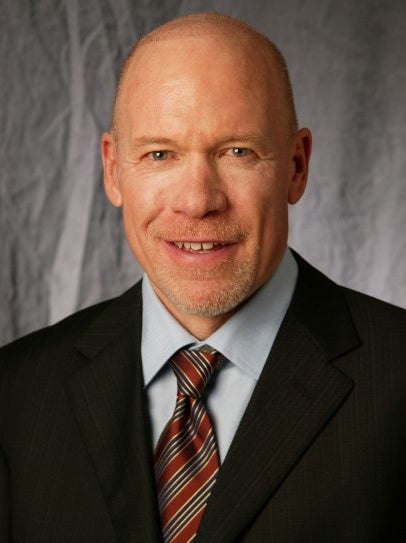Before, After and Beyond

The COVID-19 pandemic continues to wreak setbacks upon us that have far-reaching consequences. As we work to adjust to the new, socially distanced normal, we’re faced with “trickle-down” effects that expose vulnerabilities in our local socioeconomics.
“Revenue, job and housing loss have not at all been evenly distributed,” said UC Santa Barbara economics professor Peter Rupert at the latest session of “EFP Informs,” a webinar series about the ongoing economic effects of the COVID-19 pandemic hosted by the UCSB’s Economic Forecast Project.
Rupert was joined in the recent forum by Raymond MacDonald, executive director of the Workforce Development Board of Santa Barbara County; Kathy Odell, CEO of Women’s Economic Ventures; and Rob Fredericks, executive director and CEO of the Housing Authority of the City of Santa Barbara (HACSB).
Before the pandemic, business as usual meant a fairly low unemployment rate of about 3-6%, ongoing homeless issues and a dip in first-quarter earnings for local small businesses — but a cautious optimism that spring and summer could turn that around.
“Prior to COVID hitting, folks in Santa Barbara County who had some marketable skills were able to find an employer who could employ them, and employers were able to find a workforce that they basically needed,” MacDonald said.
Then came the pandemic and stay-at-home orders. Business came to an abrupt halt — particularly in the hospitality and leisure sectors, and the already-flagging retail sector. The loss of work resulted in a doubling of the unemployment rate to about 13% in Santa Barbara by June and with that, for many, came fears of homelessness.
Seven months in and some of the dust may have settled, but like the losses, the recovery hasn’t been evenly distributed. The hospitality industry bore the brunt of the shutdown early as the county, like the rest of the nation, went into social distancing mode. Unemployment in that sector spiked to almost 40% nationwide, dropping quickly as restaurants, hotels and other related businesses managed to reopen.
“Santa Barbara in particular is blessed with great weather and we’re still attracting tourists,” Odell said, with some restaurants — particularly those with outside seating — reporting that they are now nearing the profitability they had at the same time last year. Santa Barbara’s County’s general unemployment rate now hovers around 7%.
Meanwhile, as residential real estate for middle- and upper income buyers seems to be immune to the economic effects of the pandemic, housing for lower income and vulnerable populations continues to be a challenge — one made even more difficult as job losses opened up the threat of evictions.
“We had to do interim rent adjustments because the people on our programs pay a percentage of their income for rent,” Fredericks said. HACSB has managed to build some low income units for homeless seniors on Hope Street and for homeless vets on Laguna Street, he said.
“Since COVID we’ve noticed a slight softening in the rental market, with the student population not coming back,” Fredericks continued. “And the local landlord community has been more willing to accept our Section 8 voucher holders to accept that rental assistance.”
While the numbers are looking positive, the group’s optimism was tempered by the prospect of challenges to come. Local businesses are being very cautious as they rebuild, Odell said.
“There is no small business loan demand at the moment,” she said, noting that is due partly to federal assistance loans issued to small businesses over the summer. “Almost everyone believes there’s going to be another wave of COVID-19 and that the winter is going to produce some pretty harsh conditions.” Still currently in the red tier (substantial risk), the county’s progress toward orange (moderate risk) — and the ability to reopen more indoor operations — could be hampered by another major outbreak.
Protected by anti-eviction legislation and mortgage forbearances, renters and homeowners seem to be in a stable state despite widespread job losses, but that may change drastically once those protections come to an end.
“I’m fearful that it’s going to be larger than we are all thinking right now,” Fredericks said. To date, a proposed second stimulus package from the federal government is still being negotiated.
The uncertainty is compounded by an issue the pandemic has brought out in stark relief: childcare, or lack of it. The economic shutdown and social distancing requirements resulted in the closure of childcare facilities across the country and shifted the responsibilities to parents either working from home, or looking for their next job. Women are disproportionately impacted by this phenomenon; even if they could work, the current lack of childcare facilities makes it impossible to take jobs without a certain amount of flexibility. As a result, women are withdrawing from the workforce — a huge drain on an already struggling economy.
“We’re seeing predictions that more than two million women — one in four senior-level women — are considering leaving the workforce this year,” Odell said.
If problems contain the seeds of their solutions, for these panelists, the seeds were thus: find ways to expand childcare so mothers can afford to join, or re-join, the workforce; continue to push for and develop housing for low- and moderate income earners and their families; and develop transitional jobs to keep workers earning as their industries rebuild, while offering training for those who want to pivot into more pandemic-proof “growth” industries, such as construction or healthcare.
“How can we get people back to work? What are the barriers and obstacles?” MacDonald said. “I think we need to start having these discussions … the more people that are looking at it, the sooner we’ll come up with some good answers.”




